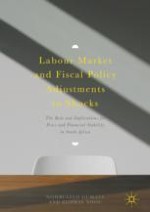2017 | OriginalPaper | Chapter
14. Real Interest Rate Shock, Labour Productivity and the 6 per cent Inflation Threshold
Authors : Nombulelo Gumata, Eliphas Ndou
Published in: Labour Market and Fiscal Policy Adjustments to Shocks
Publisher: Springer International Publishing
Activate our intelligent search to find suitable subject content or patents.
Select sections of text to find matching patents with Artificial Intelligence. powered by
Select sections of text to find additional relevant content using AI-assisted search. powered by
